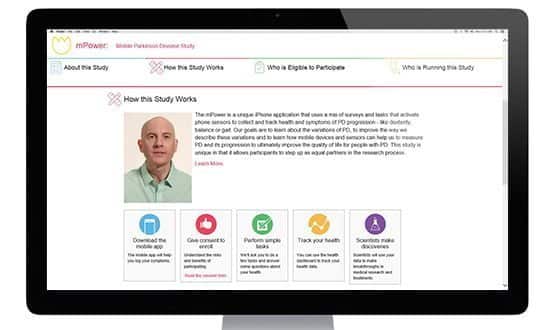Power to the people on: whistleblowing in the 21st century

Yesterday I had a psychotic patient in A&E expressing clear delusions, with a history of psychiatric admissions… After establishing that the patient was medically fit via an extensive examination and review of blood tests, I contacted the mental health service and was told "we're not coming to assess the patient because we think it's probably a UTI". Story on Patient Opinion
What should you do when – like this locum A&E consultant – you have concerns about the care that is being delivered? How should you blow the whistle? Well last week Sir Robert Francis delivered a new report on whistleblowing.
Interestingly, it focuses entirely on how to encourage staff to raise concerns internally with their managers. But what about external whistle blowing? Where you go public and raise your concerns with outside persons or bodies?
Sir Robert and everyone else in NHS management assumes that internal whistleblowing is preferable to the external kind. Unpick this a little, and it immediately becomes clear that whatever its other virtues internal, private, non-public whistleblowing definitely suits corporate needs better than the external, public kind.
But does this preference for the internal, corporate-centred ways of internal whistleblowing actually make sense in an age of social media? Might blowing the whistle in public actually be a cheaper, quicker and more effective way to correct poor care than all that internal ‘change the culture’ stuff?
One way to explore this is to ask what a whistleblowing system built around staff and citizen needs and using 21st century tools would look like.
Unlike internal whistleblowing, such a system would go public early – after all social media is nothing if not fast and friction free. Second, it would protect staff through anonymity – no one is going to raise the alarm if it’s going to end up with them being in hot water.
Thirdly, it would provide a way for the trust to engage in a public dialogue and to say what it had done. All of which sounds really tough if you are the manager on the receiving end of it: anonymous public comments that you can’t substantiate.
And such fears are not groundless – look at Twitter and Facebook and you can see whistles being blown publicly in a way that is more destructive than useful. Fortunately, it happens that we already have a platform that meets at least some of these requirements.
Lessons from an accidental prototype
Patient Opinion (which I founded and ran from 2005 to 2014) was not designed as a platform for external whistleblowing, but is none the less sometimes used by staff in this way. So what have we learnt about this kind of online external whistleblowing?
First, it’s quick and easy to use, so staff tend to share stories about concerns early. It also affords staff an appropriate level of security; anonymous but still with checks and balances to lessen malicious use.
And it allows a range of organisations from clinical commissioning groups to MPs to respond to relevant stories. Here, for example, is the rather plaintive response from the trust responsible for the mental health services criticised by the locum A&E consultant.
Finally, it leaves the public with a better understanding of, say, the pressures of dealing with mental health issues in A&E settings.
But since Patient Opinion was not designed for external whistleblowing it is more proof-of-concept than the ideal platform. It might be open to abuse by disgruntled staff (though there is little evidence for this to date) and it fails to provide enough information and offline space to help trusts get to grip with really serious allegations.
Learning from Project Callisto
So are there any improvements we might add if we were building a public, online site dedicated to promoting constructive whistleblowing?
One of the most interesting new platforms I have come across recently is Project Callisto in the States. This supports victims of college data rape and sexual violence to tell their story, and upload photos and other data to a secure, date-stamped database.
The twist is that when someone else uploads another story about the same alleged perpetrator both victims are notified that they are not alone. Project Callisto then provides support in deciding what they want to do next.
By providing an ‘information escrow’ facility, Project Callisto lessens the loneliness and helplessness that most victims feel. It also reduces the chance of malicious allegations, and creates an interesting balance between public and private information.
These ideas could be adapted to create a site where staff can anonymously log concerns about individuals and issues. As these accrued, staff would be informed that others shared their particular concerns.
They could choose when and how to reveal their identities to each other and to management. A platform that combined aspects of Patient Opinion’s public, structured conversations with an information escrow facility modelled on Project Callisto would create new forms of both internal and external whistleblowing.
This could make Sir Robert’s proposal for a ‘freedom to speak up guardian’ in each trust really powerful.
Whistles need to be heard
Internal whistleblowing will, of course and rightly, remain a key way to improve care. But it is important to recognise that online formats offer staff entirely new ways to use the power of ‘going public’ early and often.
We should use these to create systems that run alongside all the worthwhile internal changes recommended by Sir Robert.
It might be that, like so much in the evolving 21st century, a really staff-centred, public, low-friction whistleblowing platform proved faster, cheaper and more effective than yet again trying to ‘change the culture’.


Paul Hodgkin
Paul Hodgkin is founder and chair of Patient Opinion, a website on which patients, service users, carers and staff can share their stories of care across the UK. Patient Opinion is a not-for-profit social enterprise based in Sheffield.
Until 2011, Paul also worked as a GP and has published widely including in the BMJ, British Journal of General Practice and the Guardian and the Independent. Follow him on Twitter @paulhodgkin.




